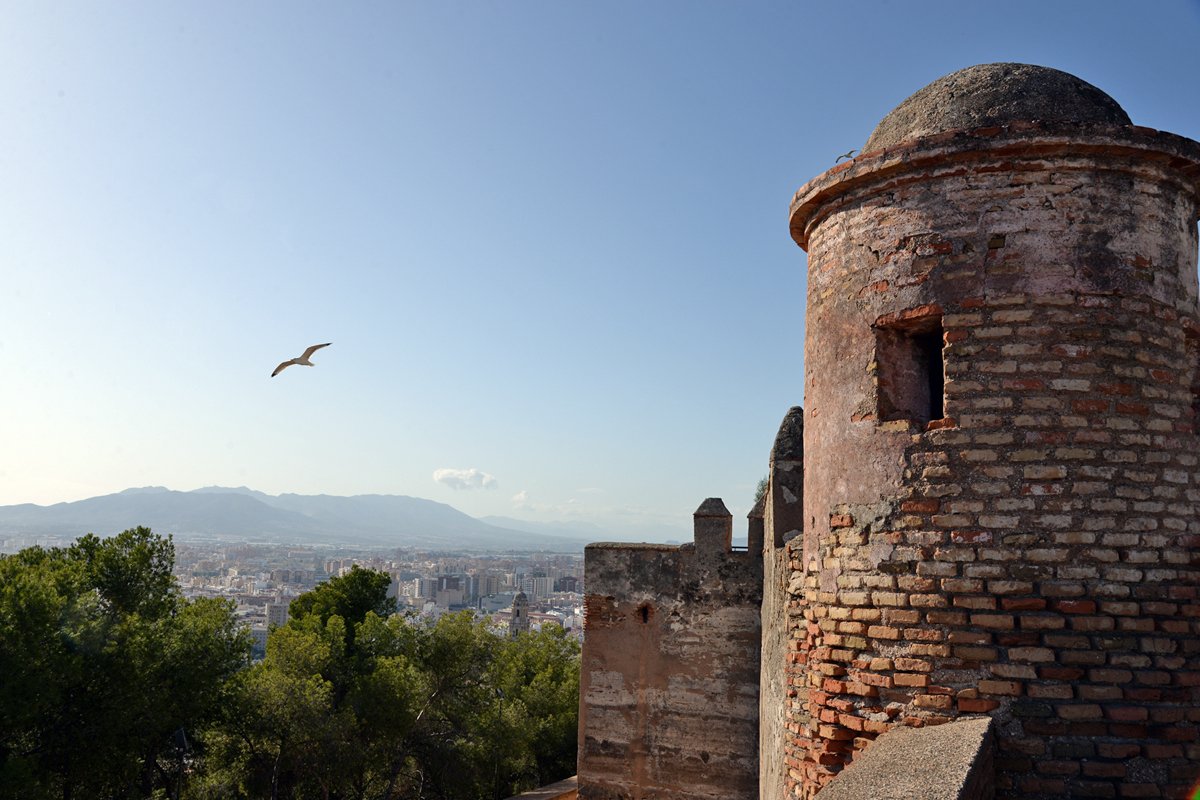
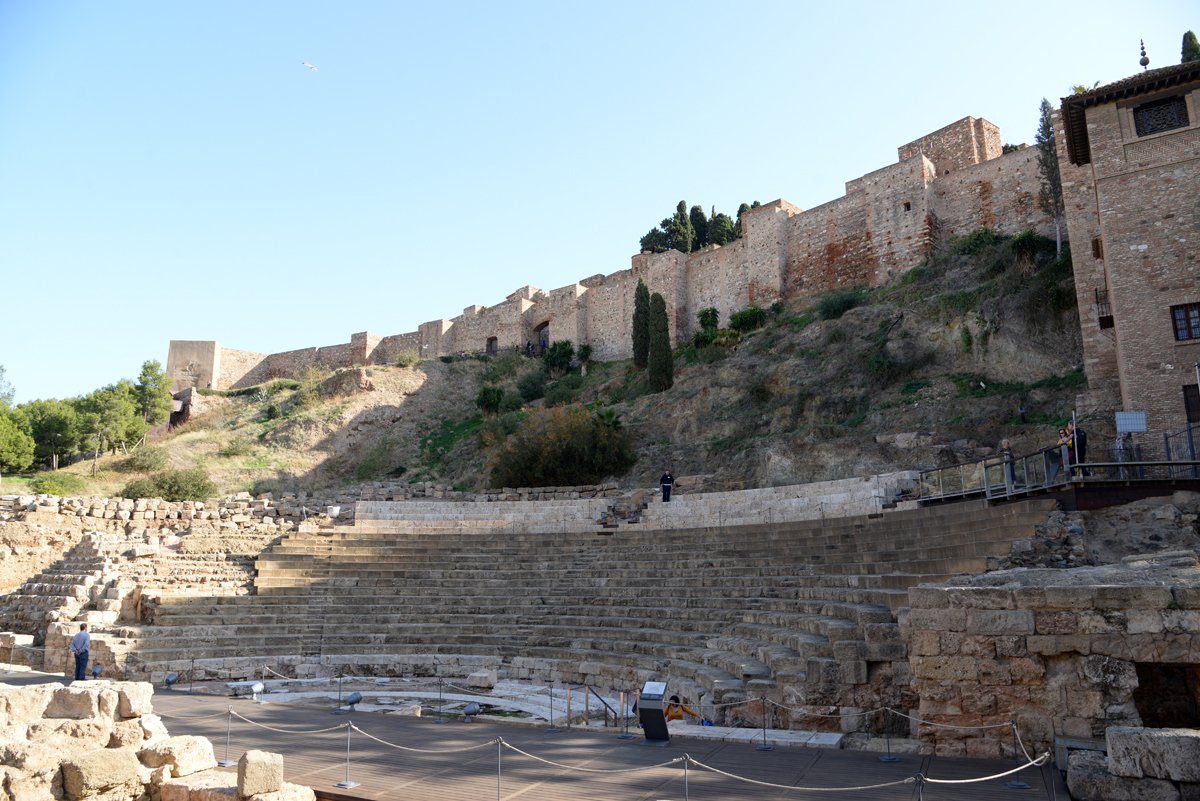
AT THE ENTRANCE
The first place we stoped before entering through the gate, was at the remnants of this Roman theatre. I haven’t read that far back in Spanish history, but a Roman theatre has been excavated and it seems that it dates back to the first century AD. Later the Muslims arrived. That happend some time during the 8th. century
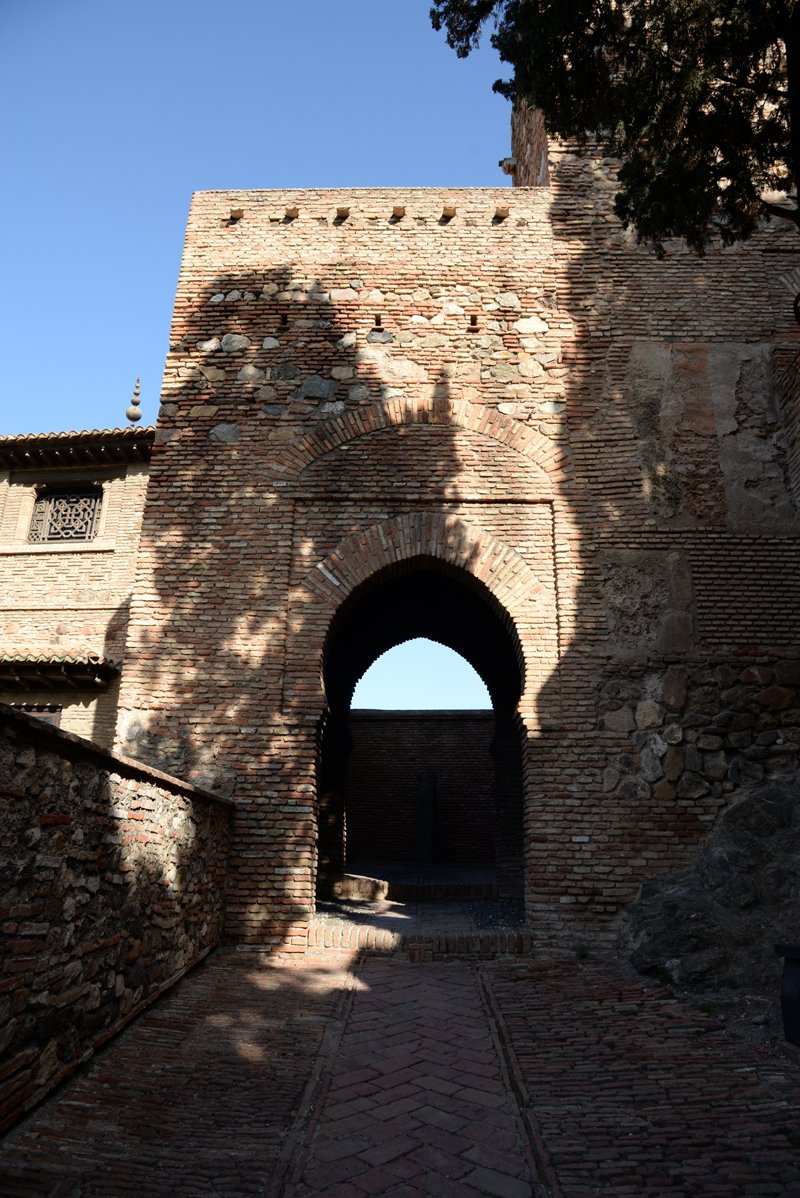
Then we entered through the gate called Puerta de los Cuartos de Granada, the entrance to get into the citadel. This is a heavy gate with thick walls that really makes you feel that this is a fortress. Most of the whole fortress and palaces looks to be in a good condition, but then much has been reconstructed or restored in the 20th century.
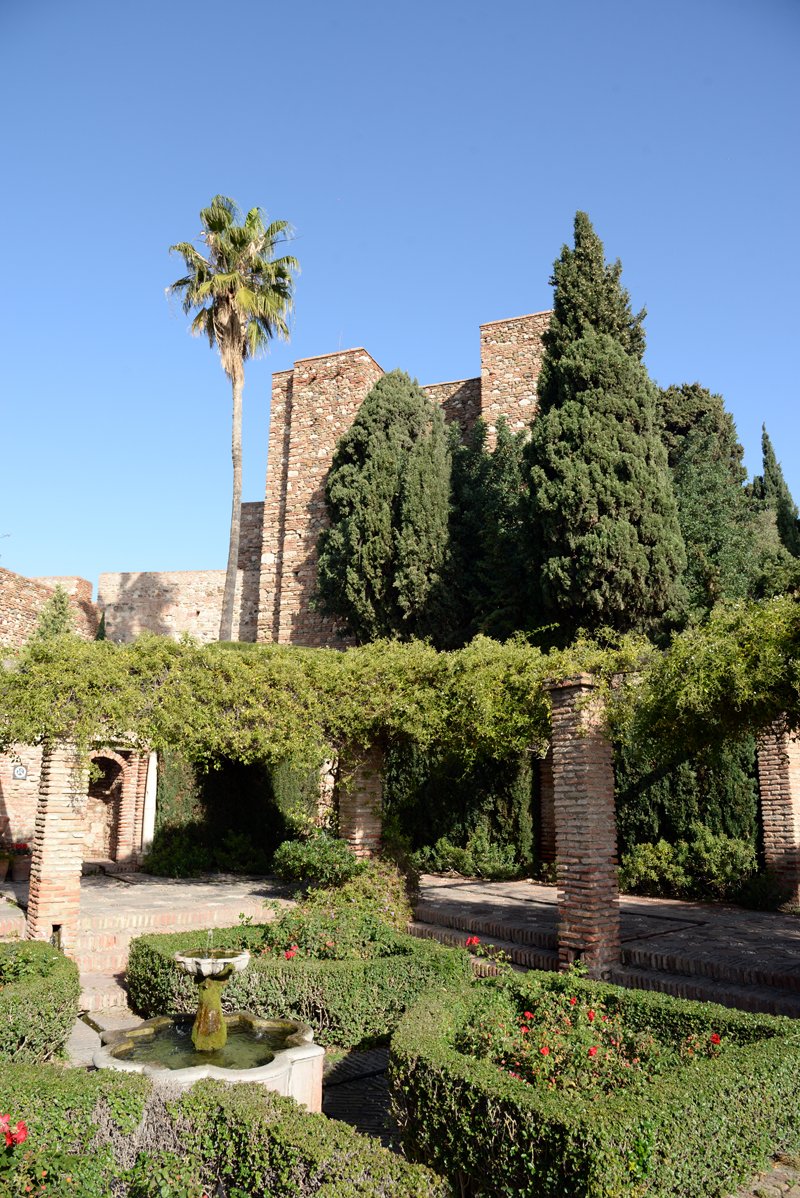
THE INNER ENCLOSURE
From then we just follow the crowd to the inner enclosure with palaces, courtyards and gardens. We took time to study carvings and decorations as we passed through each buildingThe whole complex has a defensive wall all around. Towers that once probably functioned as watch towers, are placed on the walls. A little difficalt to see on the photos (saw it on a model), but there are two enclosures.
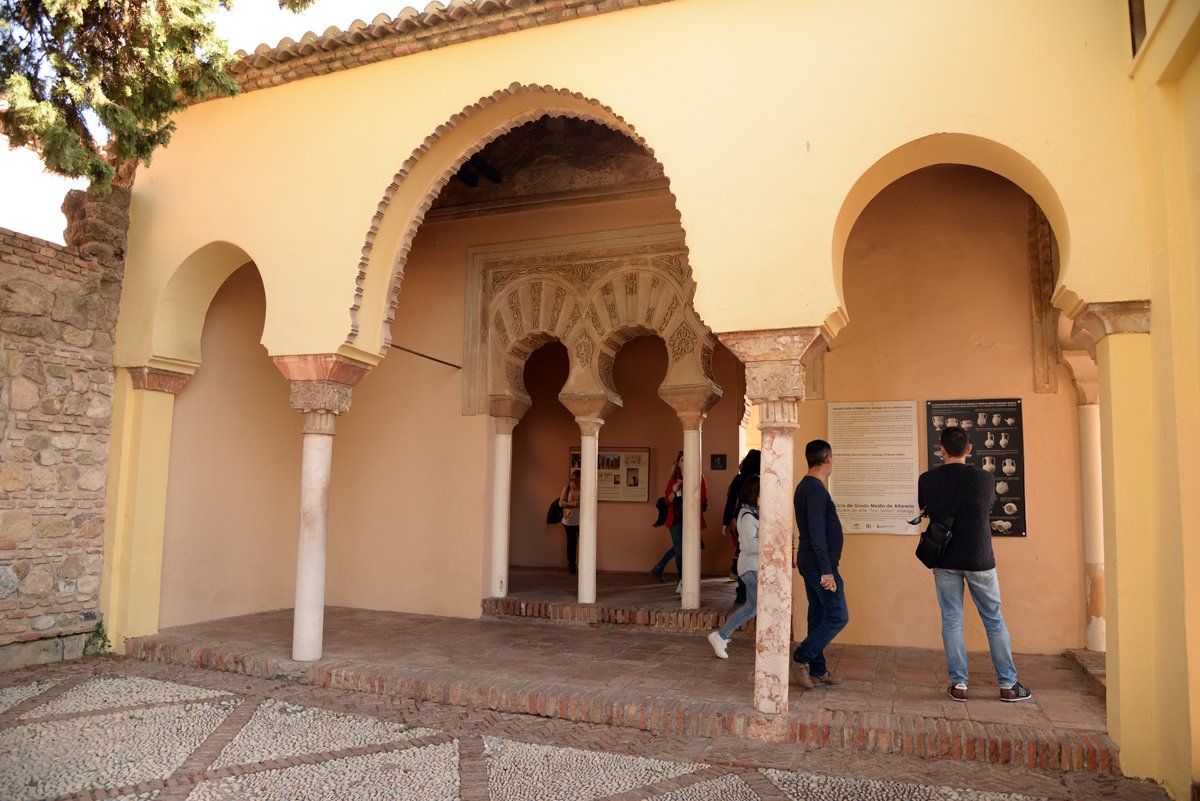 The Taifa Palace
The Taifa Palace
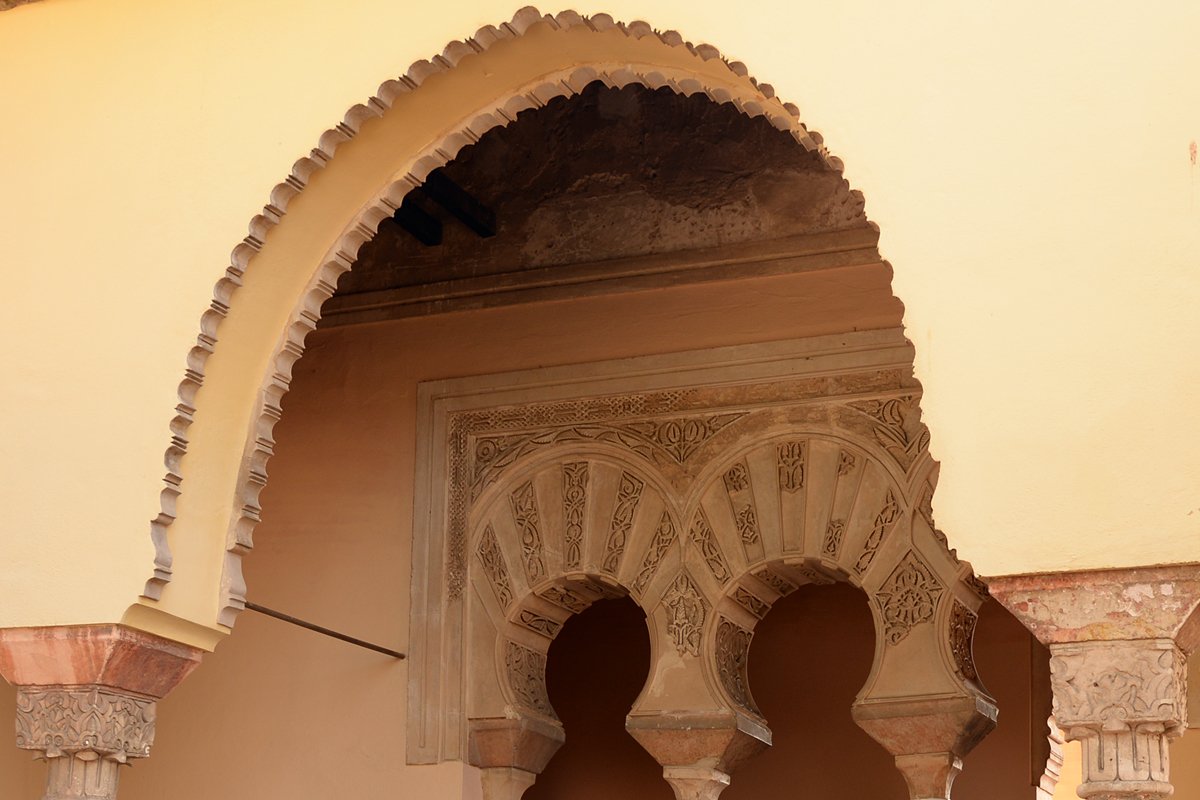 Three horseshoe arches
Three horseshoe archesThe Taifa Palace, was the first of the palaces we encountered and also the only one that can be dated back to the Taifa period ( 11 th. century). Part of the palace is no longer here. The part of it that is still here, has been restored some time during the 20th century. The pavilion has this portico with arches – the three horseshoo arches – As you see on the photo, they are supported by columns in middle and on each side.
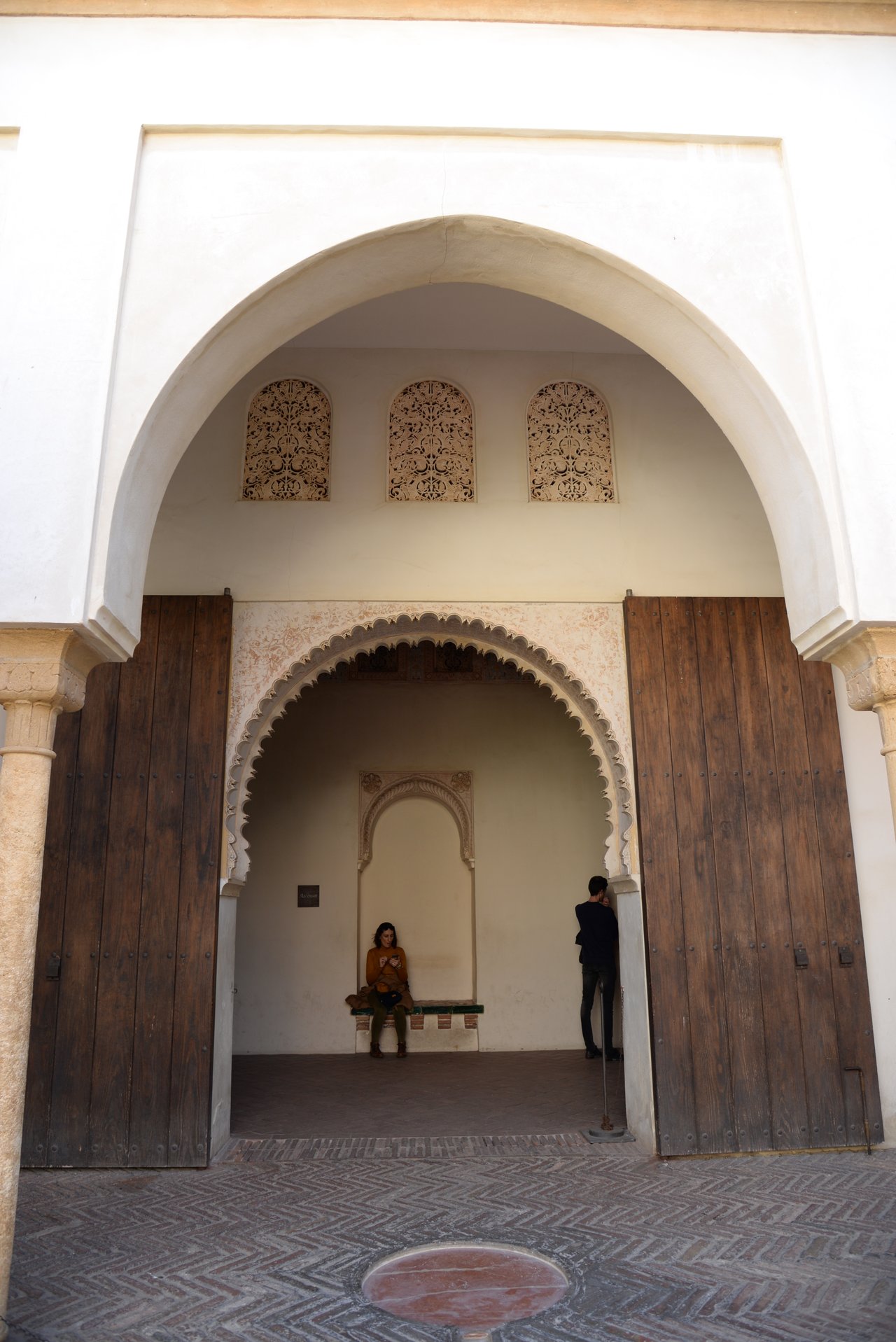
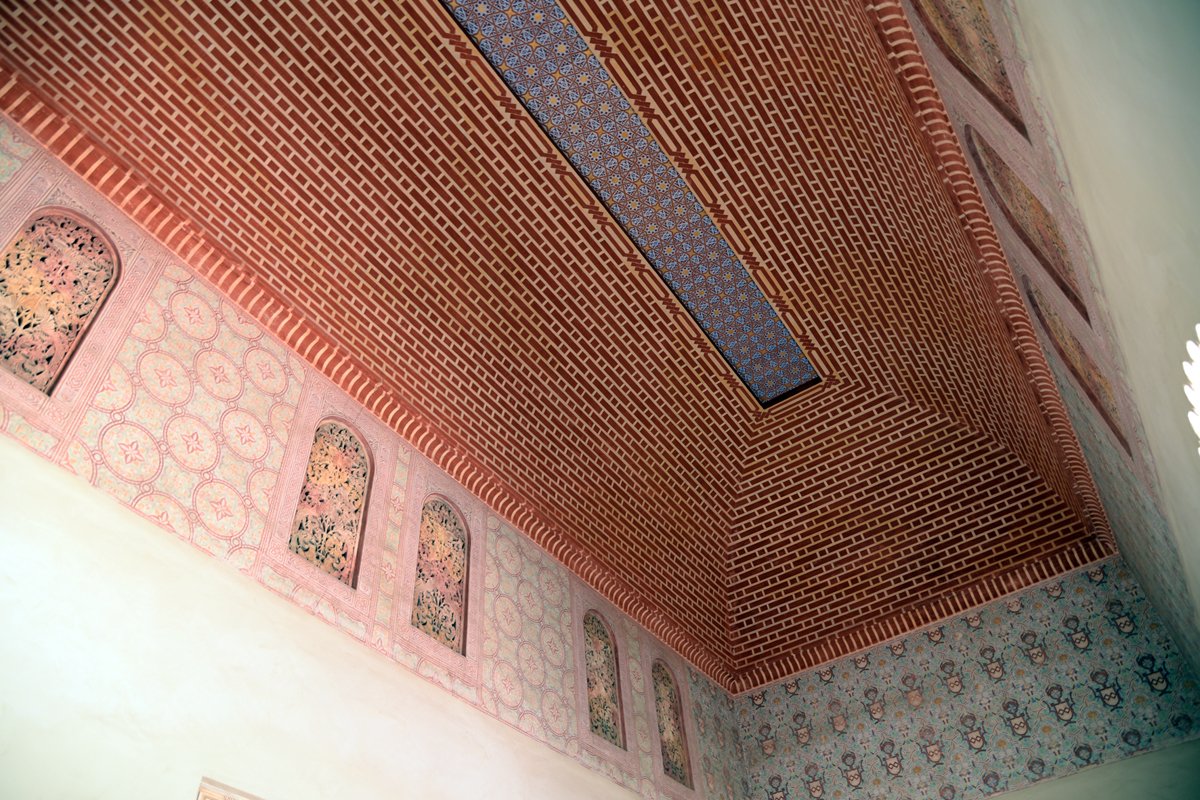
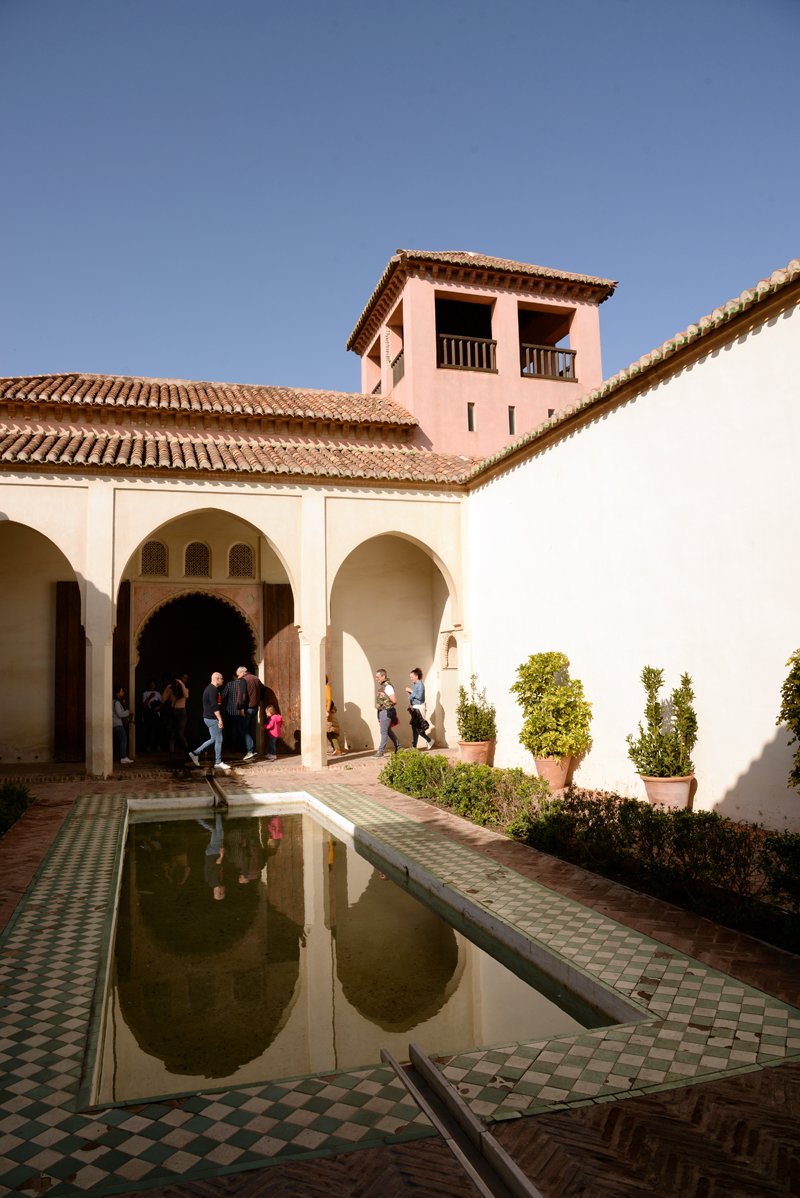
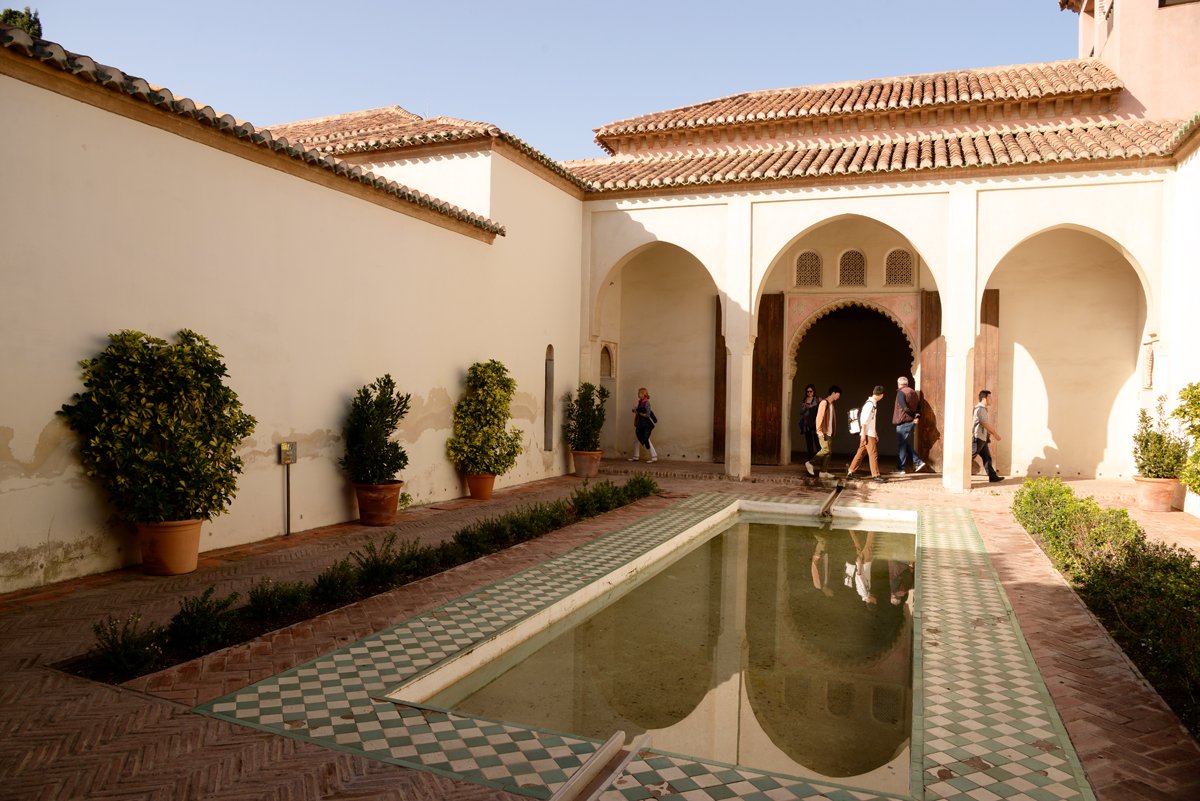 The Patio de la Alberca
The Patio de la AlbercaWe continure through chambers, arches and narrow passages. Beautiful decorations that is worth a closer look. After leaving the Taifa Palace, we have ahead of us a Nasrid Palace. Beautiful place with courtyards and porticos. This palace has also been reconstructed.
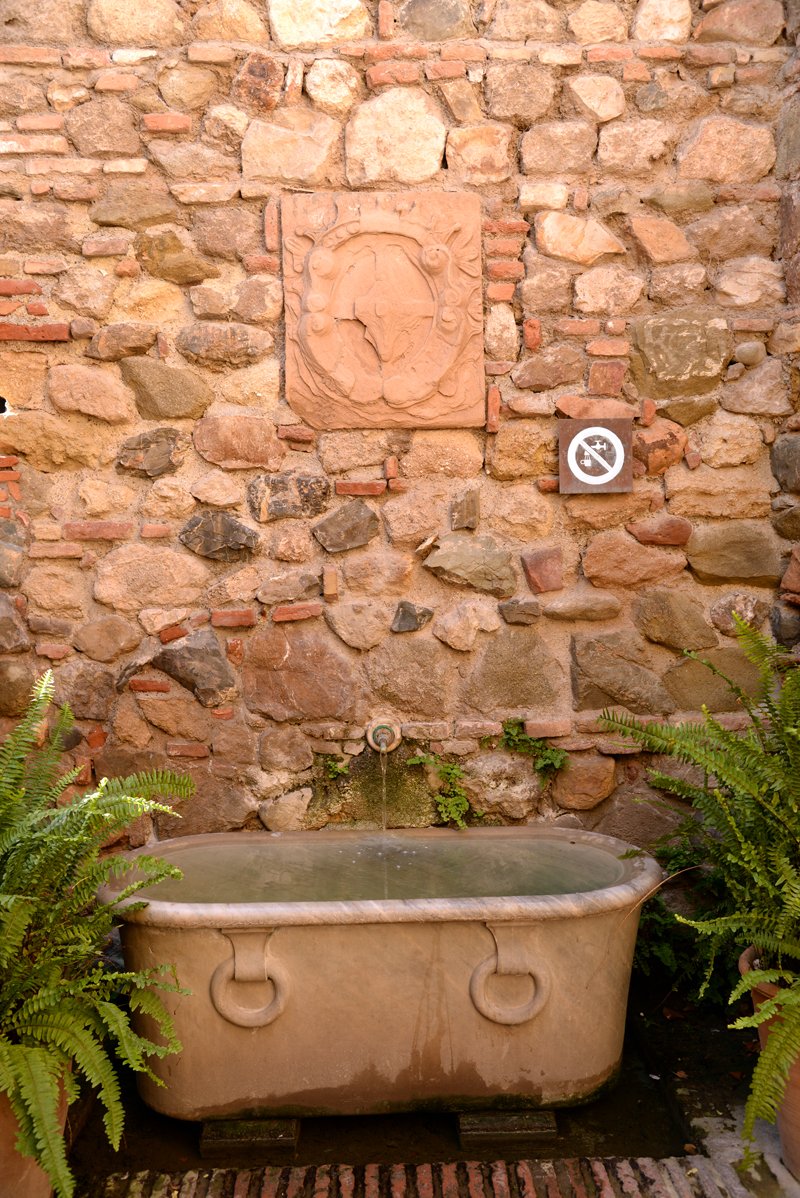
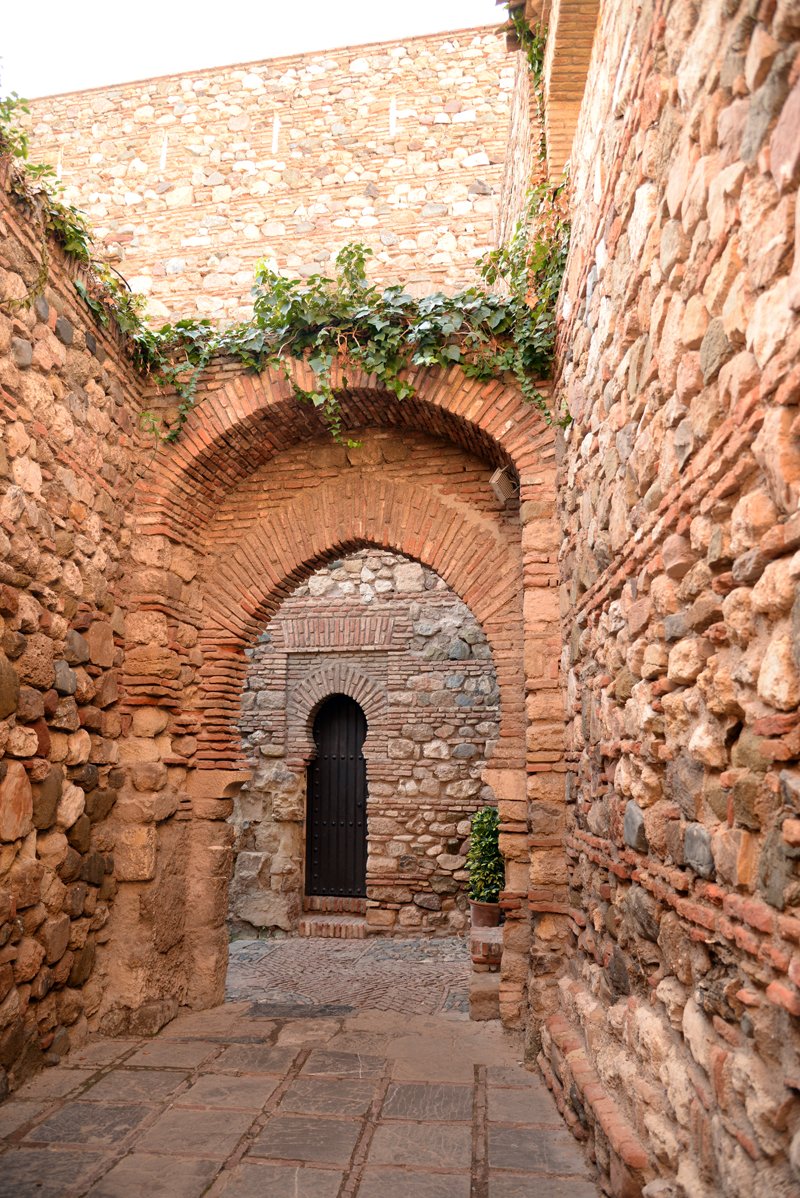
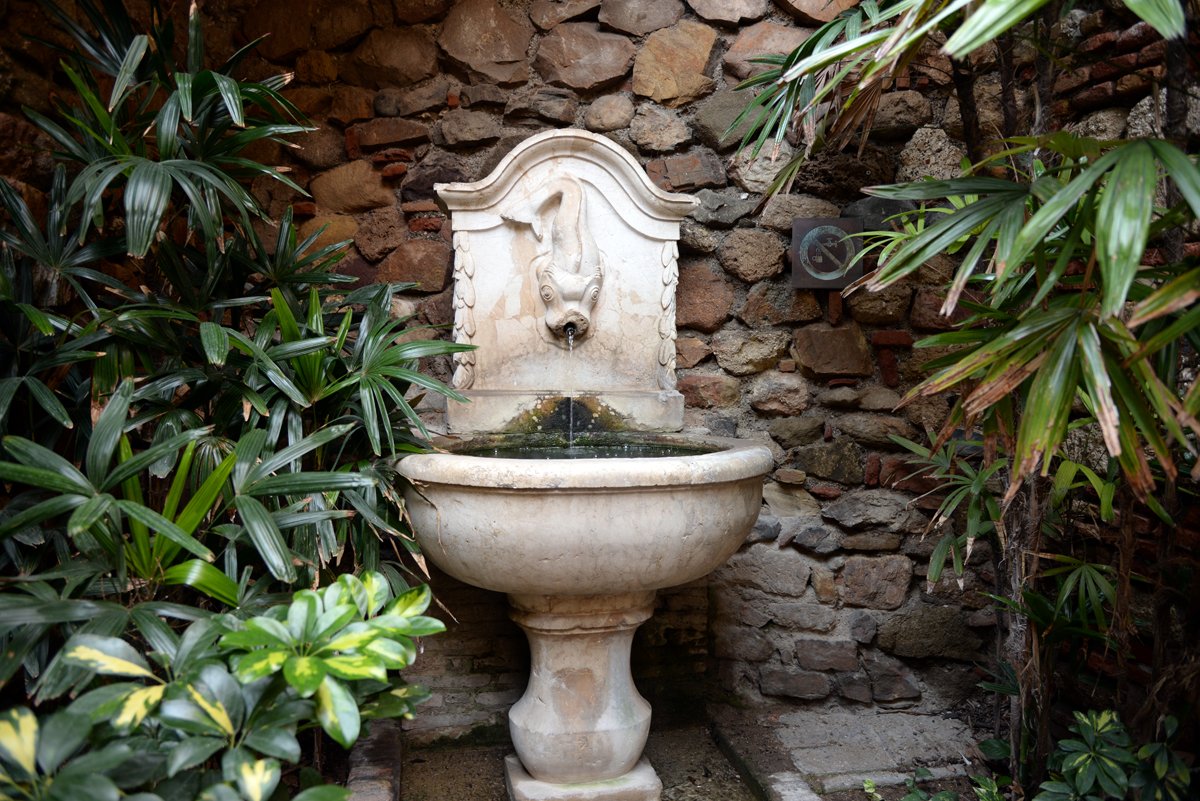
After walking through passages, the palaces and open, green spaces we reached the area that has functioned as a military area. It seems well preserved, but we could not enter, as it was not open. I don’t know if that was only on that specific day, or if it’s closed allways.


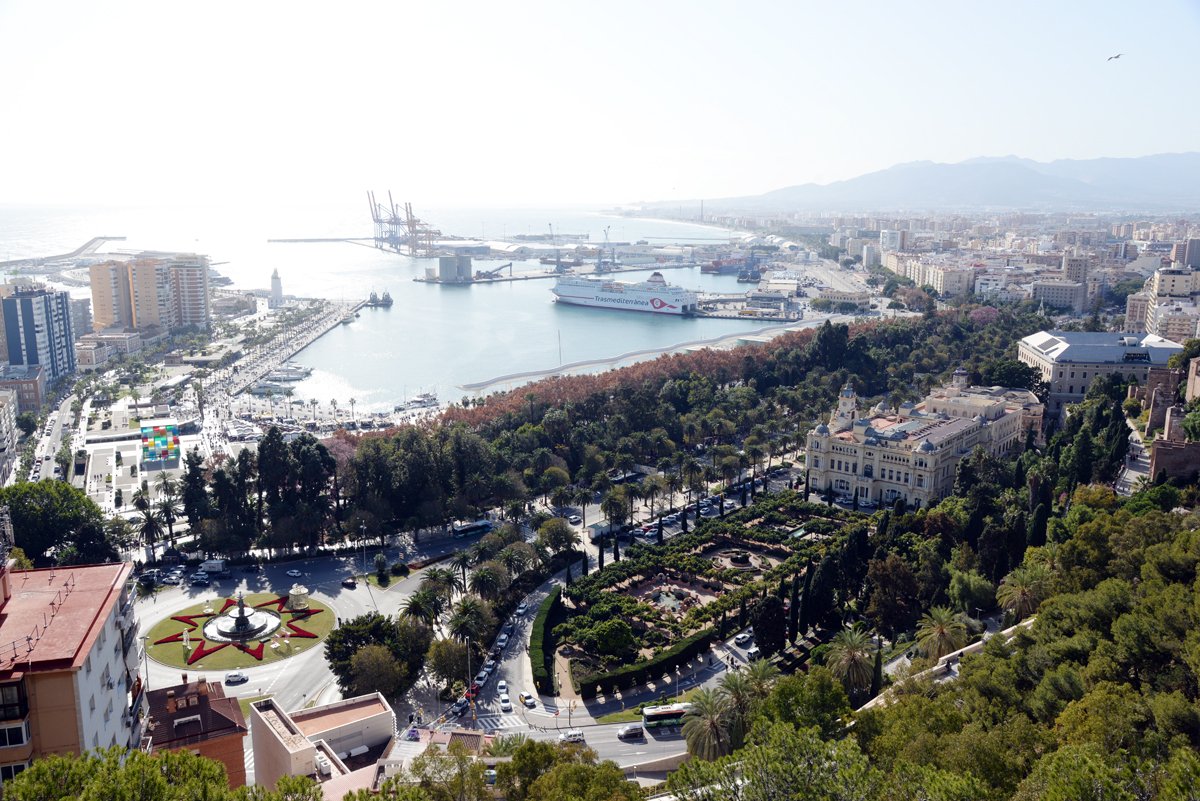

As we continue we pass walls and towers and as we were getting closer to the top, we started to get an amazing view of the city of Malaga.
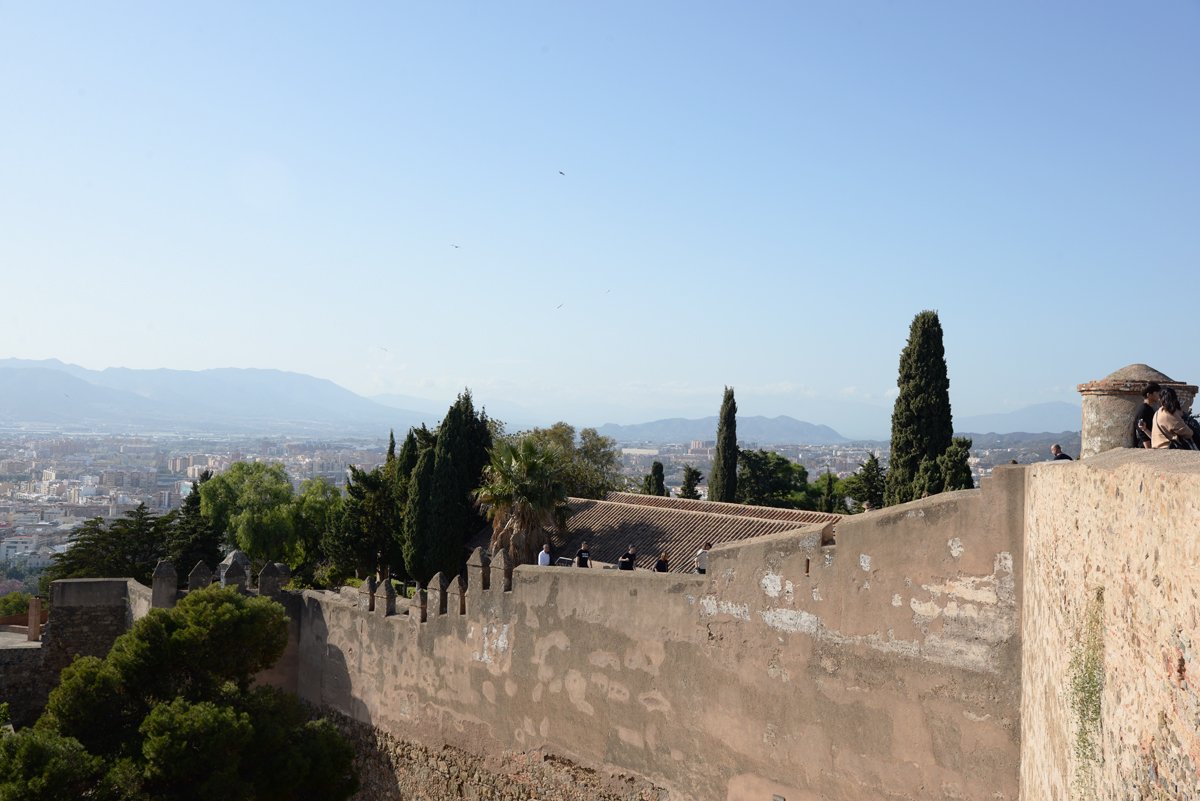
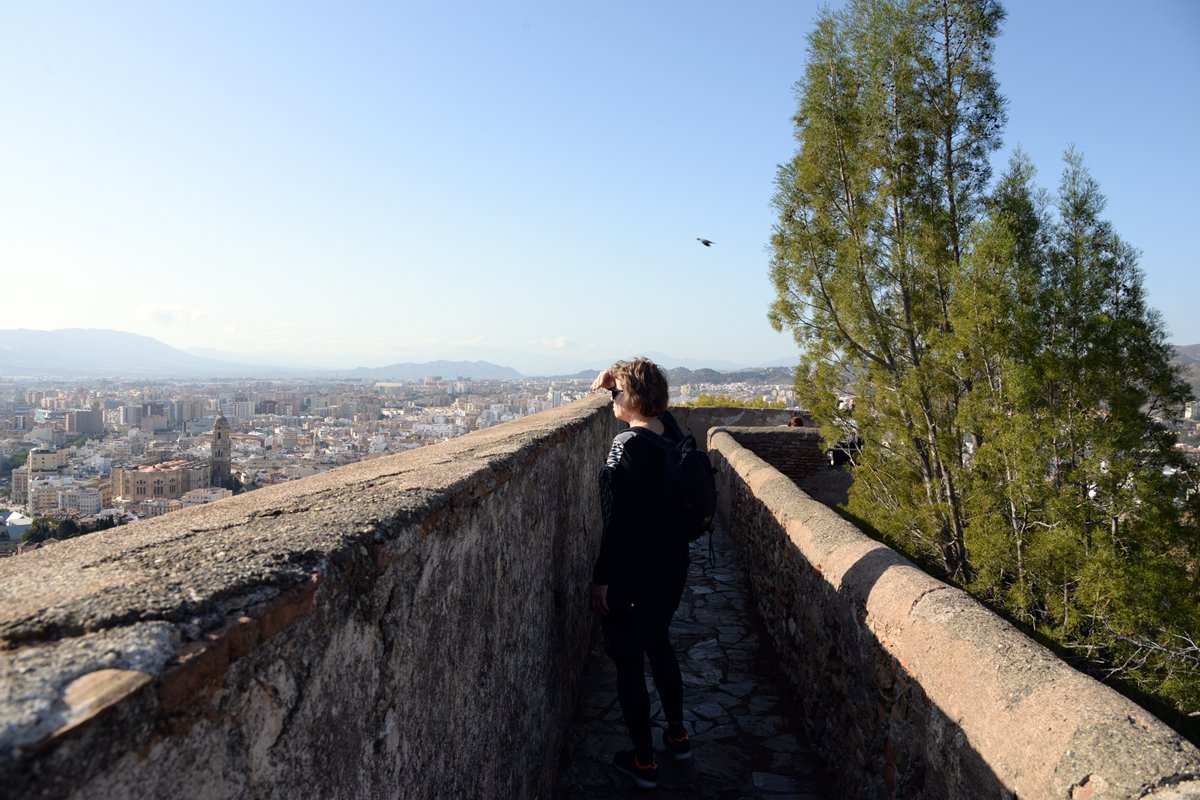
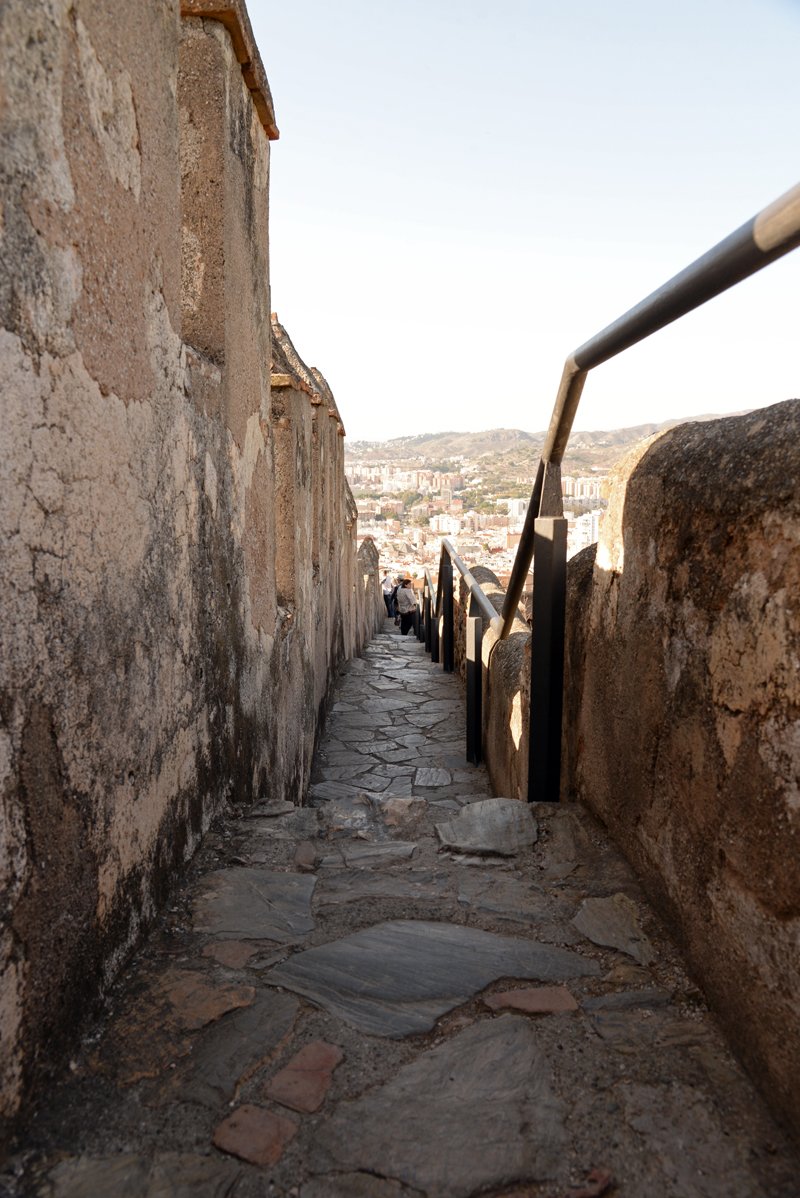
SOME HISTORY ABOUT THE FORTRESS
The Alcazaba as we see it today, was built in the 11th. Century. Different rulers have left their mark on the fortress by rebuilding, adding walls etc. Once there were ramparts that connected the fortress to the city. In the 8th century the Muslim conquered the Iberian Peninsula. After that there are historical sources that tells about a fortress up on the hill. The Alcazaba of today began its construction process in the 11th. century. It is therefore bilieved that some of the palaces / architecture as we see it today, dates from this period. During the 14th century the fortress was rebuilt by the Nasrid emr. A walled corridor that would connect the the lower part of the citadel with the castle helped creating a fortified complex that was almost impregnable. These walls are indeed massive!
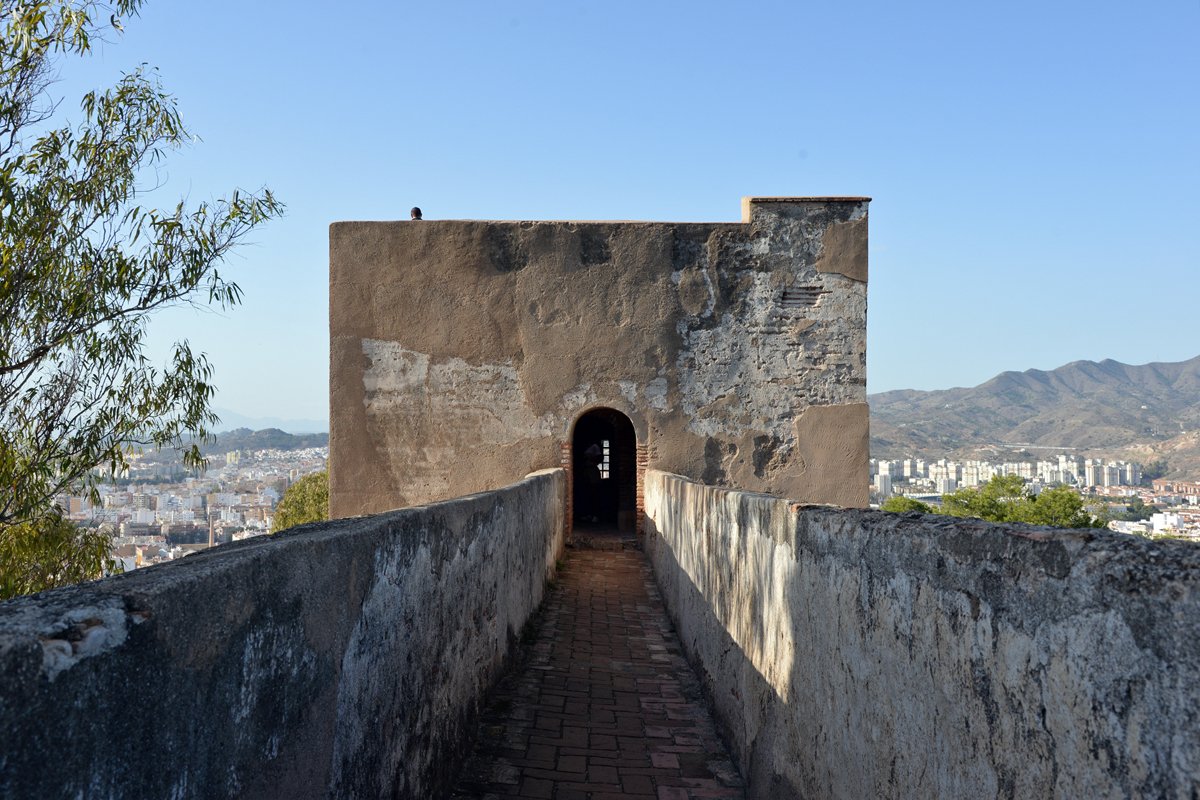
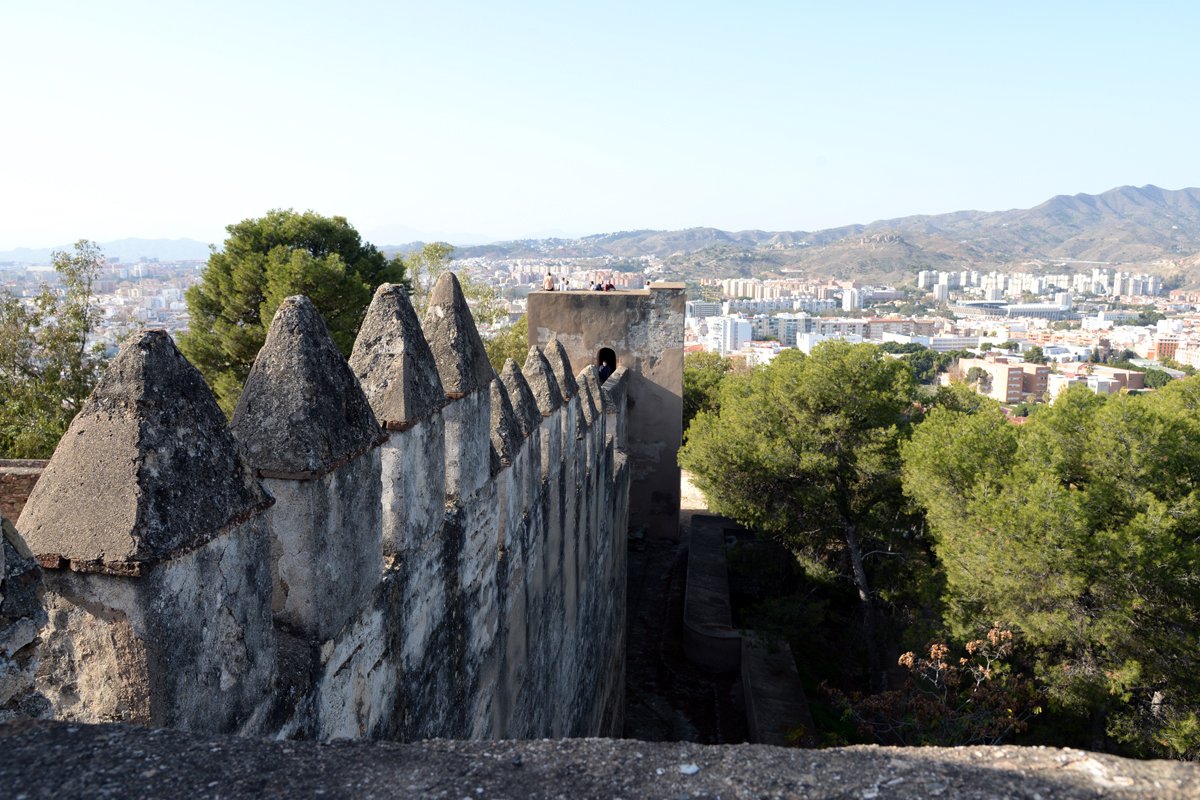
Malaga is a big city. This impressive fortress is worth a visit, even though time in Malaga is limitid. It’s in a walking distance from the city center.

Please do follow if you want to keep up with my next travel post. Any upvotes or resteems are hugely appreciated!
Latest powerup post, check out :
#TRAVEL My Weekly Powerup | #club100 | Pucará de Tilcara, a pre-Inca ancient fortress in Argentina | #steemexclusive / 8 photos
U.J
Kristiansand, Norway
All the photoes are mine, Ulla Jensen (flickr, Instagram and facebook)
Follow us for our blogs about travel, art, article and photo

